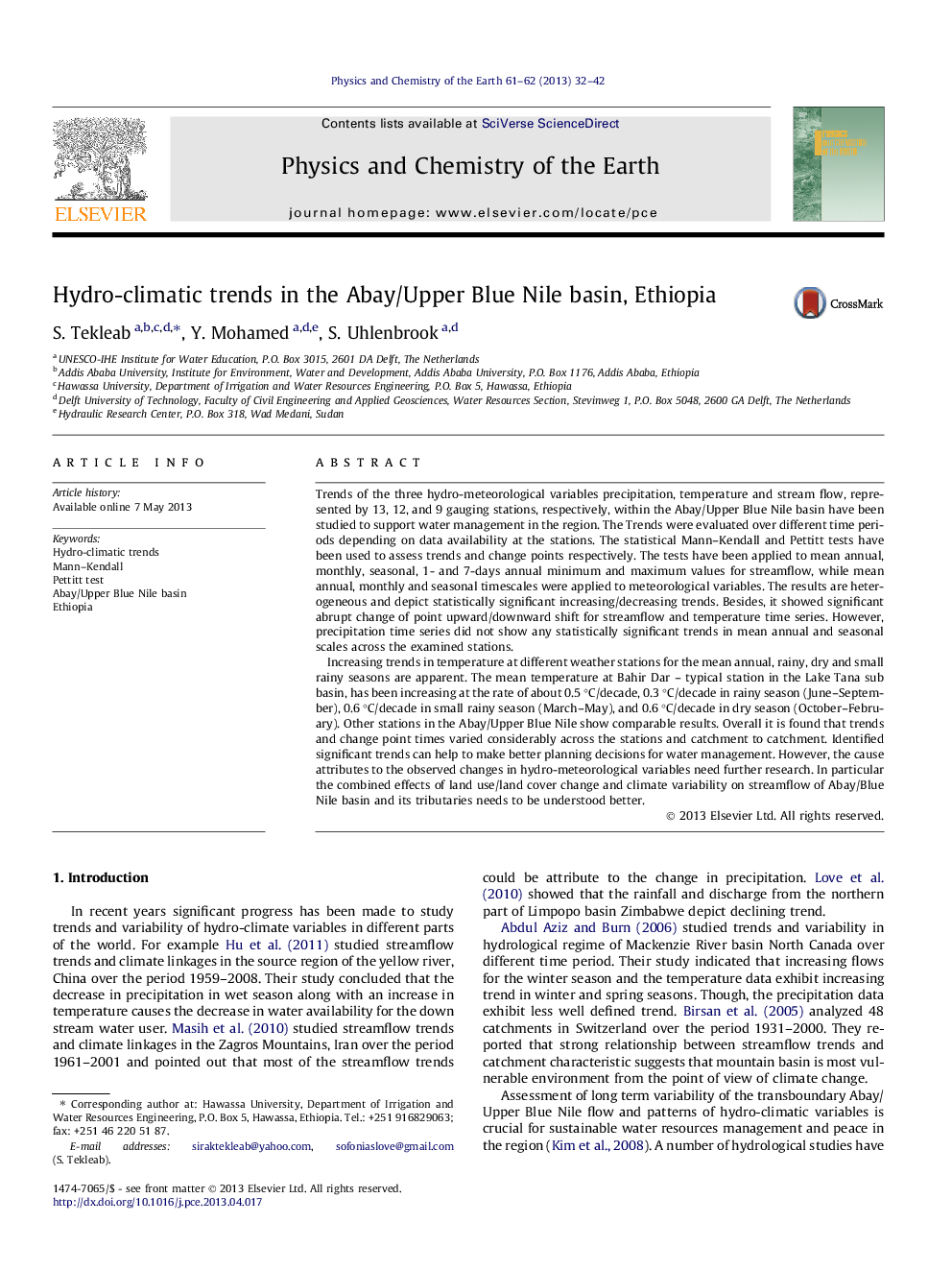| Article ID | Journal | Published Year | Pages | File Type |
|---|---|---|---|---|
| 4720998 | Physics and Chemistry of the Earth, Parts A/B/C | 2013 | 11 Pages |
•Precipitation did not show significant trends in most of all the stations.•Trends in streamflow showed heterogeneous results both increasing and decreasing.•Significant increasing trends in temperature were identified in most of the stations.•Identified trends can help to make better planning decisions for water management.
Trends of the three hydro-meteorological variables precipitation, temperature and stream flow, represented by 13, 12, and 9 gauging stations, respectively, within the Abay/Upper Blue Nile basin have been studied to support water management in the region. The Trends were evaluated over different time periods depending on data availability at the stations. The statistical Mann–Kendall and Pettitt tests have been used to assess trends and change points respectively. The tests have been applied to mean annual, monthly, seasonal, 1- and 7-days annual minimum and maximum values for streamflow, while mean annual, monthly and seasonal timescales were applied to meteorological variables. The results are heterogeneous and depict statistically significant increasing/decreasing trends. Besides, it showed significant abrupt change of point upward/downward shift for streamflow and temperature time series. However, precipitation time series did not show any statistically significant trends in mean annual and seasonal scales across the examined stations.Increasing trends in temperature at different weather stations for the mean annual, rainy, dry and small rainy seasons are apparent. The mean temperature at Bahir Dar – typical station in the Lake Tana sub basin, has been increasing at the rate of about 0.5 °C/decade, 0.3 °C/decade in rainy season (June–September), 0.6 °C/decade in small rainy season (March–May), and 0.6 °C/decade in dry season (October–February). Other stations in the Abay/Upper Blue Nile show comparable results. Overall it is found that trends and change point times varied considerably across the stations and catchment to catchment. Identified significant trends can help to make better planning decisions for water management. However, the cause attributes to the observed changes in hydro-meteorological variables need further research. In particular the combined effects of land use/land cover change and climate variability on streamflow of Abay/Blue Nile basin and its tributaries needs to be understood better.
